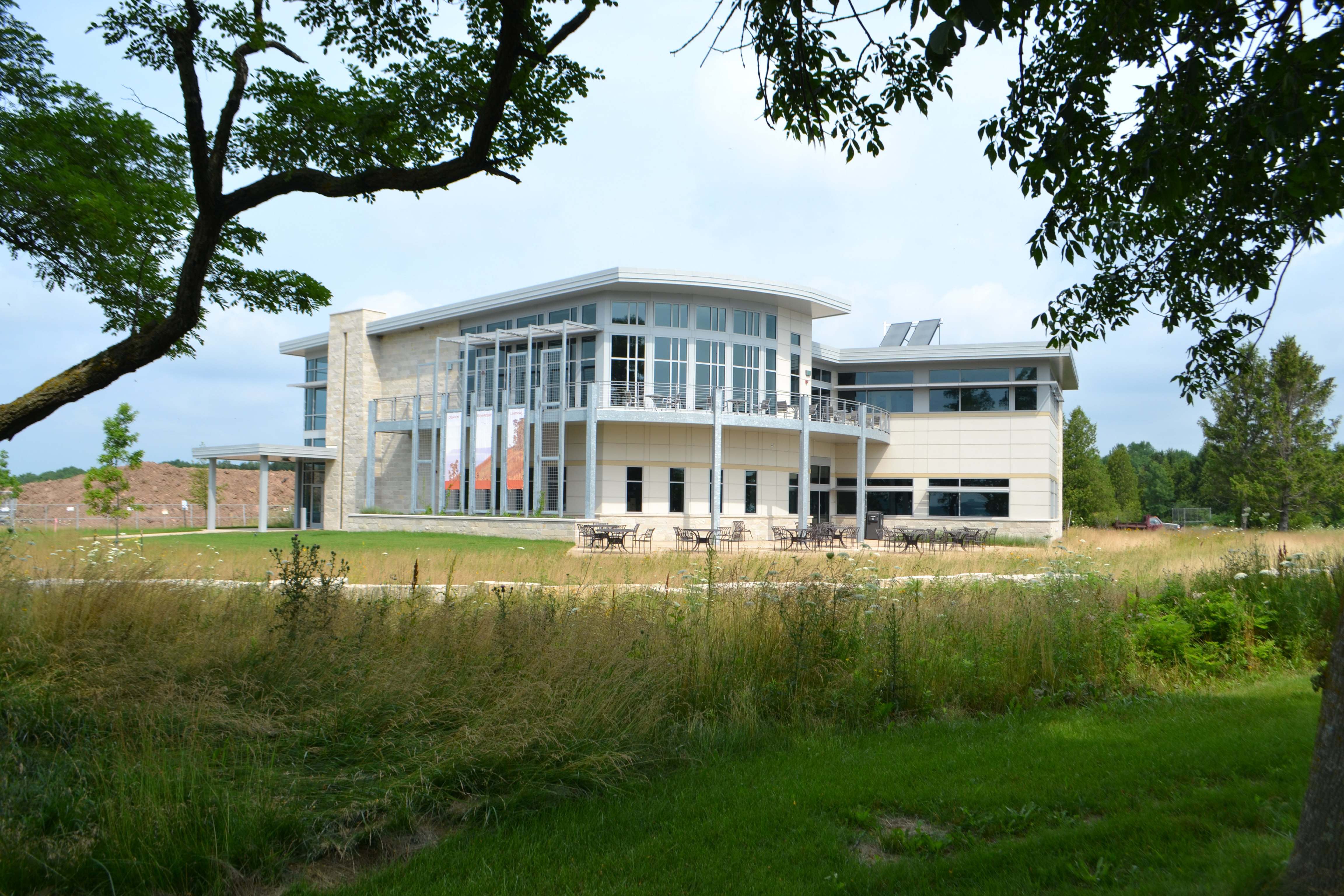
Just over a decade ago, the university celebrated the opening of its Concordia Center for Environmental Stewardship, and in so doing, marked the start of its venture into the realm of environmental education and stewardship of God's creation.
The 13,000-square-foot CCES was funded entirely by charitable gifts. Its location—135 feet above majestic Lake Michigan on the southeast Wisconsin shoreline—perfectly positions it as a primary study center for a variety of environmentally oriented academic, outreach, and research efforts. The center’s focus, combined with the university’s mission, makes it a premier place for individuals of all ages to grow in their knowledge of what it means to be a Christian steward of the earth.
In honor of its 10th anniversary, here are 10 things you might not have known about the CCES.
1. ‘Green’ for the win!
Just one month after it officially opened in August 2010, the Concordia Center for Environmental Stewardship achieved a LEED Platinum rating, the highest eco-friendly rating that a building can achieve. At the time, the CCES was one of only three environmental/nature centers in Wisconsin and only the second higher education facility in the state to carry the moniker.
Efforts undertaken to earn the title included incorporation of geothermal for heating and cooling of the building and the use of recycled materials when constructing the center. About 87 percent of the building is made from materials from the building that previously occupied the space, The Peace Center, which had been maintained as a dorm until 2009.

2. Aquaponics at home
Concordia is the only university in Wisconsin to have an aquaponics system setup directly on campus. Sure, the CCES is the one building on campus you have to walk outdoors to get to, but by comparison, it’s pretty darn accessible! Aquaponics is a system that circulates wastewater from fish to hydroponically cultivated plants, whereby the plants draw nutrients from the waste and filter the water for use by the fish. In other words, it’s a self-sustaining, indoor growing system! Concordia’s system annually produces around 2,500 heads of lettuce, which is then donated to organizations that help those in need. Recipients have included Fresh Meals on Wheels of Sheboygan County, the Sheboygan County Food Bank, Saukville Community Food Pantry, and Feed Our Hospital Heroes.
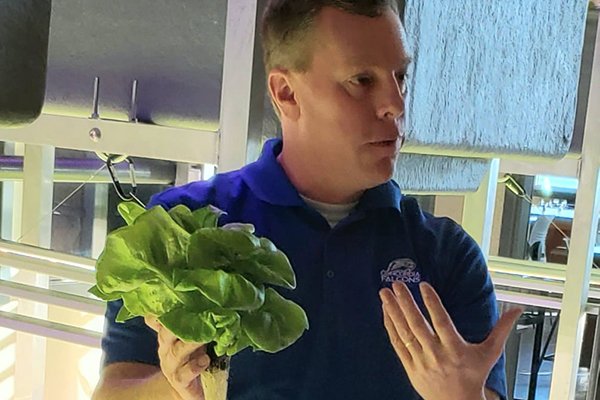
3. The walleyes have it
While most aquaponics systems utilize tilapia, Concordia went for a more elevated breed: walleye, a staple amidst the Wisconsin fish fry. The CCES features a state-of-the-art aquaculture system, which allowed staff and students last spring to feed-train about 5,000 fry and grow them up into fingerlings before ultimately transferring them to the aquaponics system.
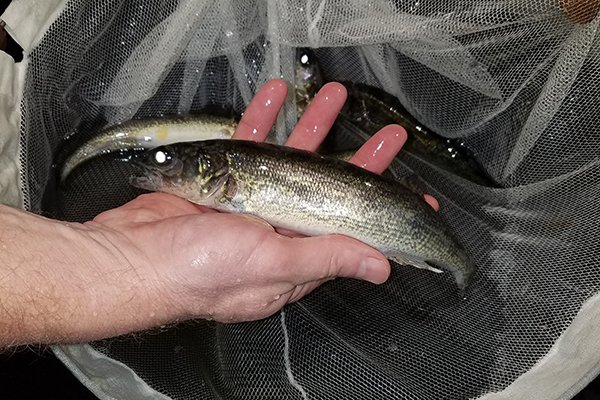
4. A brood awakening
This fall, for his Water Quality and Aquaponics course, CCES Director Dr. Mark Schmitz obtained a breeding colony of tilapia as a learning opportunity for students. Female tilapia “mouth-brood” their eggs and fry, meaning the females lay unfertilized eggs on the bed of the lake or tank. The eggs are fertilized by the male and then returned to the female’s mouth where she incubates them until they hatch. Check out the videos below for a glimpse at what the class got to observe.
5. A scarce breed of really old fish
The Wisconsin DNR has granted the CCES a rare opportunity to provide a home for lake sturgeon, a species of fish that is endangered in some parts of the world. The lake sturgeon is the oldest and largest native fish species in North America’s Great Lakes, and Concordia is one of only three sites in the state that has been granted permission to host lake sturgeon in captivity. To receive the sturgeon, Concordia works with Riveredge Nature Center, where fingerlings are annually produced.

6. Make way for monarchs
Concordia’s 135-foot bluffs and prevailing northwest winds create the perfect combination for monarchs’ migration. The migratory flyway contributes each fall to one of the least understood biological phenomena in the world—several hundred million monarchs make a nearly 2,500-mile trek from Wisconsin (and other parts of the Midwest and Canada) to the mountainous valleys of central Mexico. For years Concordia students have used the CCES as a home base to annually catch, tag, and release the butterflies for the purpose of scientific study.

7. Rapturous raptors
COVID put a damper on many bird watchers’ annual tradition, but in a typical year Concordia serves as a prime spot for community members to spot hawks and other raptors (birds of prey) as they migrate south. The bird migration happens each year in the fall. The reason for the raptors’ preference of Concordia’s shoreline? Schmitz says it has to do with the number of insects that pass by the campus. Concordia’s shoreline also serves as a flyway for dragonflies, and the dragonflies serve as a food source for the migratory birds. Anyone who’s into it knows that the CCES—and Concordia’s bluff in general—is a spectacular space to take in the view.
Catch a glimpse below of the birds’ food source in flight, taken from the balcony of the CCES.
8. Function from a freshwater resource
CUW isn’t the only college in Wisconsin with breathtaking views of Lake Michigan, but administration sure made great use of the campus’ location when choosing the building site for the CCES. Perched on a bluff overlooking one of the world’s top 10 freshwater resources, the CCES’ spot provides a prime opportunity for limnology studies, which most other colleges in Wisconsin can’t claim. The lake informs various labs undertaken in science courses at Concordia—from water quality testing to the investigation of algae photosynthesis, students have a front-row seat to it all.
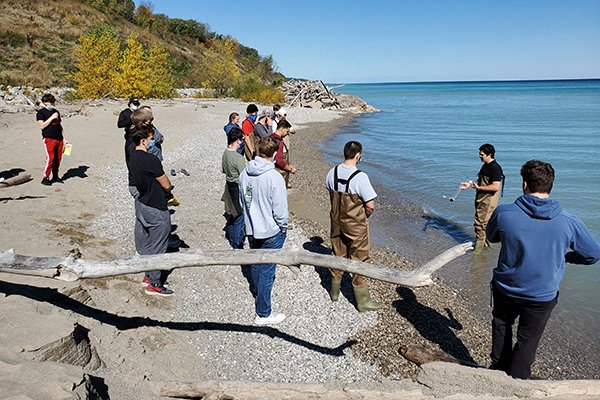
9. Growing new programs
Concordia launched a new undergraduate degree program this fall that will make ample use of the CCES. The Bachelor of Science in Environmental Science helps learners develop a strong scientific foundation by exposing them to a variety of topics in natural science (e.g. biology, chemistry, earth science, and physics). It’s the perfect precursor to a career in natural resources, ecology, aquaponics, or environmental chemistry. Even if a student doesn’t choose to major in environmental studies or science, they’ll likely still make use of the building. Many of the core science classes (botany, zoology, environmental science, aquaponics and water quality, ecology of the tropics, and astronomy) are set in the CCES.

10. A site to behold
Who wouldn’t want a breathtaking view of Lake Michigan as the backdrop for their event? The CCES is also available to rent (limitations are in place currently due to COVID) and has played host to countless high-profile community groups—environmentally focused and beyond. In a typical summer, the CCES is the home base for multiple international science camps and home school groups have frequented the facility for educational enrichment. No matter the age of background, the CCES has provided enrichment is a variety of ways over the past decade.
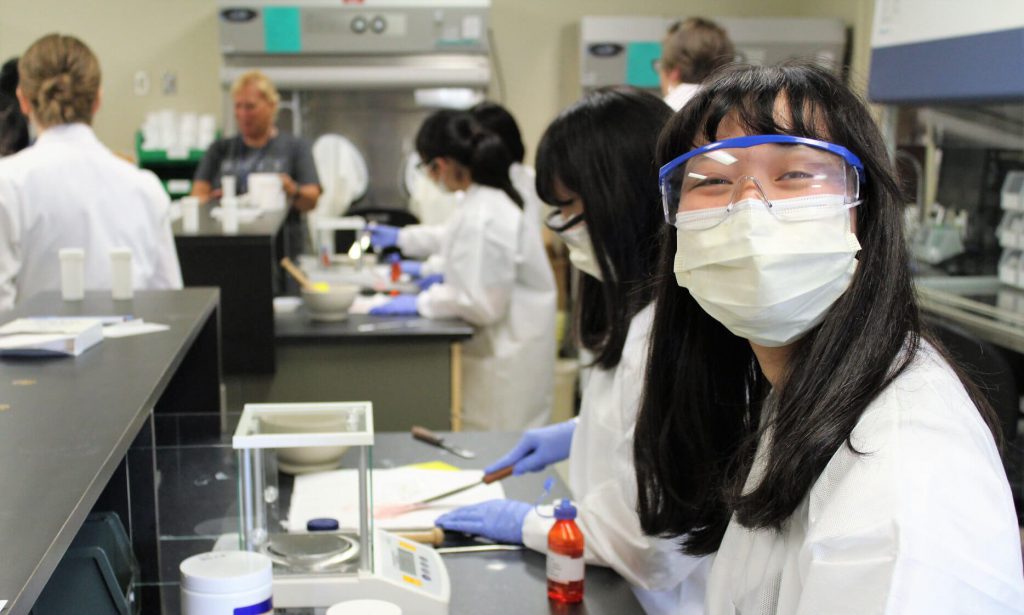
— This story is written by Kali Thiel, director of university communications for Concordia University Wisconsin and Ann Arbor. She may be reached at kali.thiel@cuw.edu or 262-243-2149.
If this story has inspired you, why not explore how you can help further Concordia's mission through giving.